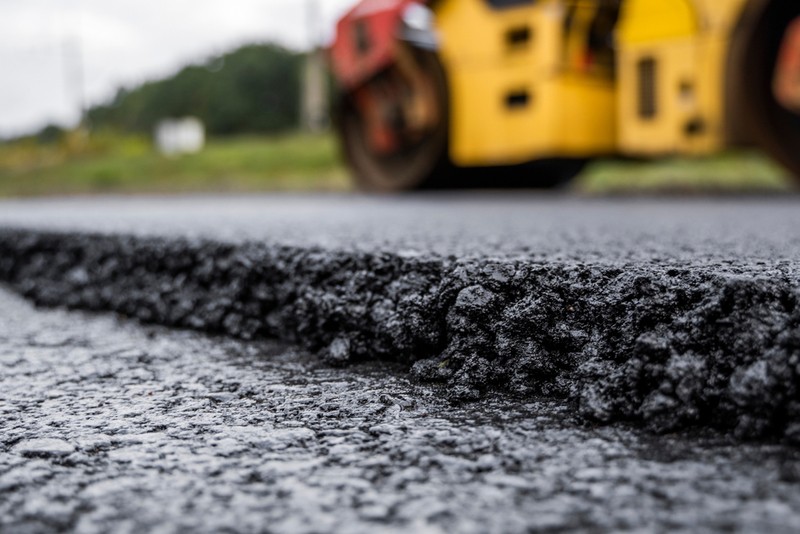Make Best Use Of Investment Returns: Angled Car Park Excellence with Asphalt Sealing
Make Best Use Of Investment Returns: Angled Car Park Excellence with Asphalt Sealing
Blog Article
Hot Mix Asphalt: A Lasting Remedy for Sidewalk
Warm Mix Asphalt (HMA) has arised as a leading sustainable option for sidewalk services, offering a myriad of cutting-edge technologies and environmental benefits. As the need for green building and construction practices expands, checking out the subtleties of HMA's sustainability can provide beneficial insights right into the future of pavement solutions.
Environmental Benefits of Hot Mix Asphalt

In Addition, Hot Mix Asphalt helps to minimize metropolitan heat island impacts. Its dark color soaks up sunlight, decreasing the quantity of warmth mirrored back right into the environment compared to lighter-colored pavements. This can lower ambient temperature levels in urban areas, decreasing the need for cooling and eventually reducing energy intake.
In enhancement, Warm Mix Asphalt adds to improved stormwater administration. Its porous nature permits water to recharge and infiltrate the pavement groundwater supplies, decreasing runoff and the danger of flooding. These ecological advantages make Hot Mix Asphalt a sustainable selection for leading roadways and highways.
Energy Efficiency in HMA Manufacturing
Is power efficiency an essential element in the production of Hot Mix Asphalt (HMA)? Power plays a substantial role in the manufacturing of HMA, impacting both price and ecological sustainability. One key element of power effectiveness in HMA production is the use of warm mix asphalt (WMA) technologies.
Furthermore, innovations in plant technologies have actually caused more energy-efficient HMA production processes. Modern plants are created with features like recycled asphalt pavement (RAP) handling abilities, effective burner systems, and boosted insulation, all adding to power cost savings. By maximizing power usage in HMA manufacturing, the sector can lower its carbon footprint while maintaining top quality sidewalk products. Power performance is, therefore, a crucial consideration in making certain the sustainability of Warm Mix Asphalt manufacturing.
Recyclability of Warm Mix Asphalt
The recyclability of Warm Mix Asphalt (HMA) is a pivotal facet of its sustainability and lasting environmental influence. HMA is just one of the most recycled products in the USA, with over 100 million bunches of redeemed asphalt pavement (RAP) being reused every year in brand-new pavement building. Recycling HMA supplies a number of environmental benefits, such as decreasing the need for virgin products, reducing power consumption during production, and decreasing the quantity of waste sent to land fills.
The procedure of recycling HMA involves milling the existing sidewalk, crushing it right into smaller sized items, and blending it with brand-new accumulation and asphalt binder to develop a recycled mix. In general, the recyclability of HMA plays a significant role in advertising sustainable techniques within the sidewalk sector.

Long-Term Efficiency of HMA
Asphalt pavements demonstrate longevity and durability over a prolonged duration, showing the lasting performance of Warm Mix Asphalt anchor (HMA) The durability of HMA can be associated to its capacity to withstand hefty web traffic tons, severe climate condition, and the impacts of aging. Research studies have revealed that properly designed and properly constructed HMA sidewalks can last for twenty years or more with regular upkeep. The secret to making the most of the lasting performance of HMA lies in utilizing high-quality materials, complying with finest practices in building, and implementing efficient maintenance strategies. Proper water drainage, routine examinations, and timely repair services are important for protecting the architectural stability of HMA sidewalks over time. Furthermore, improvements in HMA innovation, such as making use of polymer-modified binders and warm mix asphalt, have actually further improved the sturdiness and durability of HMA sidewalks. By prioritizing high quality building and construction and upkeep practices, HMA remains to prove itself as a economical and lasting solution moved here for resilient sidewalk facilities.

HMA: Toughness and Sustainability
Showing both resilience and sustainability, Warm Mix Asphalt (HMA) has come to be a cornerstone in the building of long-lasting sidewalk facilities - commercial parking lot paving. HMA's sturdiness comes from its capacity to endure hefty tons, severe climate conditions, and high traffic volumes, making it a trustworthy selection for highways, freeways, and flight terminal paths. The composition of HMA, which commonly includes accumulations, binder, and filler, plays a vital role in improving its durability and resistance to tear and put on
In addition, HMA's sustainability hinges on its recyclability and energy-efficient production procedure. The capability to reuse recovered asphalt pavement (RAP) in brand-new HMA mixes decreases the demand for virgin products click and lessens the environmental influence of sidewalk building and construction and maintenance. Additionally, the energy effectiveness of generating HMA depends on its reduced mixing temperatures contrasted to various other pavement products, resulting in reduced power intake and greenhouse gas exhausts.
Conclusion
To conclude, warm mix asphalt (HMA) provides a lasting remedy for sidewalk with its eco-friendly attributes. HMA's recyclability, energy effectiveness in production, and long-lasting sturdiness make it a green selection for roadway building and construction. By saving natural resources, minimizing waste, and decreasing greenhouse gas emissions, HMA plays an essential function in promoting sustainability in infrastructure development. Its capacity to minimize metropolitan warm island results even more underscores its importance in developing durable and ecologically conscious pavement systems.
HMA is one of the most recycled products in the United States, with over 100 million tons of recovered asphalt pavement (RAP) being reused yearly in new sidewalk construction.The procedure of recycling HMA involves milling the existing sidewalk, crushing it into smaller pieces, and blending it with brand-new aggregate and asphalt binder to develop a recycled mix.Asphalt sidewalks demonstrate resilience and strength over an extended duration, reflecting the lasting performance of Hot Mix Asphalt (HMA) Furthermore, advancements in HMA modern technology, such as the usage of polymer-modified binders and cozy mix asphalt, have better enhanced the longevity and long life of HMA pavements. The capacity to recycle reclaimed asphalt sidewalk (RAP) in new HMA combinations minimizes the need for virgin materials and minimizes the ecological impact of pavement building and maintenance.
Report this page